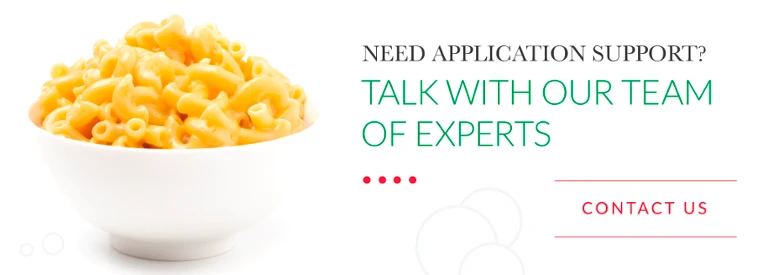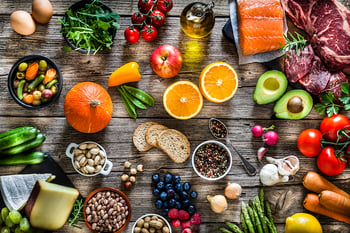.jpg?width=900&name=Sodium-in-school-lunches%20(1).jpg) Where do children eat the majority of their meals? For many, especially those from low-income households, it’s through their school breakfast and lunch programs. Unfortunately, it’s also where many children get the majority of their sodium intake — too much, according to the American Heart Association, WHO and other organizations.
Where do children eat the majority of their meals? For many, especially those from low-income households, it’s through their school breakfast and lunch programs. Unfortunately, it’s also where many children get the majority of their sodium intake — too much, according to the American Heart Association, WHO and other organizations.
Despite overwhelming agreement among health professionals and various health institutions, efforts to reduce sodium in school lunch programs have met with some opposition from groups who fear that lower sodium meal options will be rejected by students.
Part of the hesitation stems from concerns that food manufacturers may not offer lower sodium formulations that appeal to children’s palates. In other words, they’re afraid they won’t taste good.
Just as important is ensuring that lower sodium formulations are affordable. Here, we’ll take a look at the school meal market, current sodium recommendations for school meal programs and ways that food producers can comply without compromising on flavor or profits.
School Lunch Program Market Size
Imagine tapping into a $14 billion market; that’s how much the National School Lunch Program spends each year on its meal program for students. What’s more, those meals are served to a captive audience of nearly 30 million people.
Recent legislation authorizes schools to receive additional payments when they demonstrate that the meals they serve meet updated nutritional standards.
In any given year, the National School Lunch Program ranks as the nation's second largest food and nutrition assistance program, serving nearly 100,000 public and private non-profit institutions. The only time this ranking fell was during the peak of the pandemic when school closures were commonplace.
School Lunch Program Sodium Targets
Sodium targets for the National School Lunch Program and School Breakfast Program have been moving targets. Back in 2012, the USDA required school food authorities to gradually reduce sodium in school meals over time. The first target date was in 2014, followed by another in 2017. A third deadline originally targeted the 2022-2023 school year but was pushed back to the end of the school year for 2023-2024. In a reversal, however, lunches and breakfasts must meet updated targets by July 1, 2022.
Currently, lunchtime sodium reduction targets for grades 9-12 must not exceed 1,080 mg. Grades K-8 requirements reduce these levels even further. By July of 2022, the maximum sodium level for grades 9-12 will be lowered by more than 25% to 740 mg.
If your head isn’t spinning yet, the FDA recently issued new standards apart from those required for school lunch programs. Unlike the USDA requirements for schools, the FDA’s guidelines are voluntary, calling for a 12% reduction in the amount of sodium in food products over the next 2.5 years, including restaurant meals, processed foods and even baby food. They admit it’s an incremental approach, suggesting that further reductions will be called for in the future.
RELATED GUIDE: Understanding Increased Consumer Demand for Reduced Sodium
Nutritionists and other health professionals see these measures as a step in the right direction and will continue to push for lower limits on sodium. The bottom line for food formulators is that they need to see the writing on the wall: reduced sodium level requirements and guidelines aren’t going anywhere but down in coming years.
A proactive approach can help turn these seemingly difficult adaptations into market opportunities. The difficulty comes in finding ingredient options that help to reduce sodium without having to completely reinvent the wheel when it comes to formulations.
How a Form of Whey Protein Can Help Reduce Sodium
Meals served through school programs must meet federal nutrition standards. Offering food products that align with those standards may allow food and beverage manufacturers to increase their presence in the market.
Some school lunch program administrators argue that enough great-tasting products that meet those standards are still lacking. Based on market size alone, there is plenty of motivation for food manufacturers to offer reduced sodium products, so why haven’t there been more entering the market?
Despite major advances in ingredient innovation, it’s difficult to mimic the umami and savory goodness of good old-fashioned salt, especially when attempting to create clean-label formulations. A relatively new type of whey protein ingredient is helping to debunk that myth in formulations containing fresh or processed cheese.
Grande Gusto® is an all-natural whey ingredient that can replace a significant portion of cheese and reduce fat, calories and sodium content. School meals containing such staples as macaroni and cheese, creamy soups, savory fillings and other cheesy applications can benefit from the improved nutritional value and cost savings.
Most importantly is that the enzymatic properties and milk mineral content of Grande Gusto actually enhance salty notes, allowing them to come to the forefront and creating the sensory illusion that a product is saltier than it really is. This means that salt can be reduced without compromising taste, texture or mouthfeel.
Appealing to younger generations is a key to long-term growth, and providing wholesome, nutritional meals in schools is just one way to build brand loyalty. For more information, reach out with questions.




